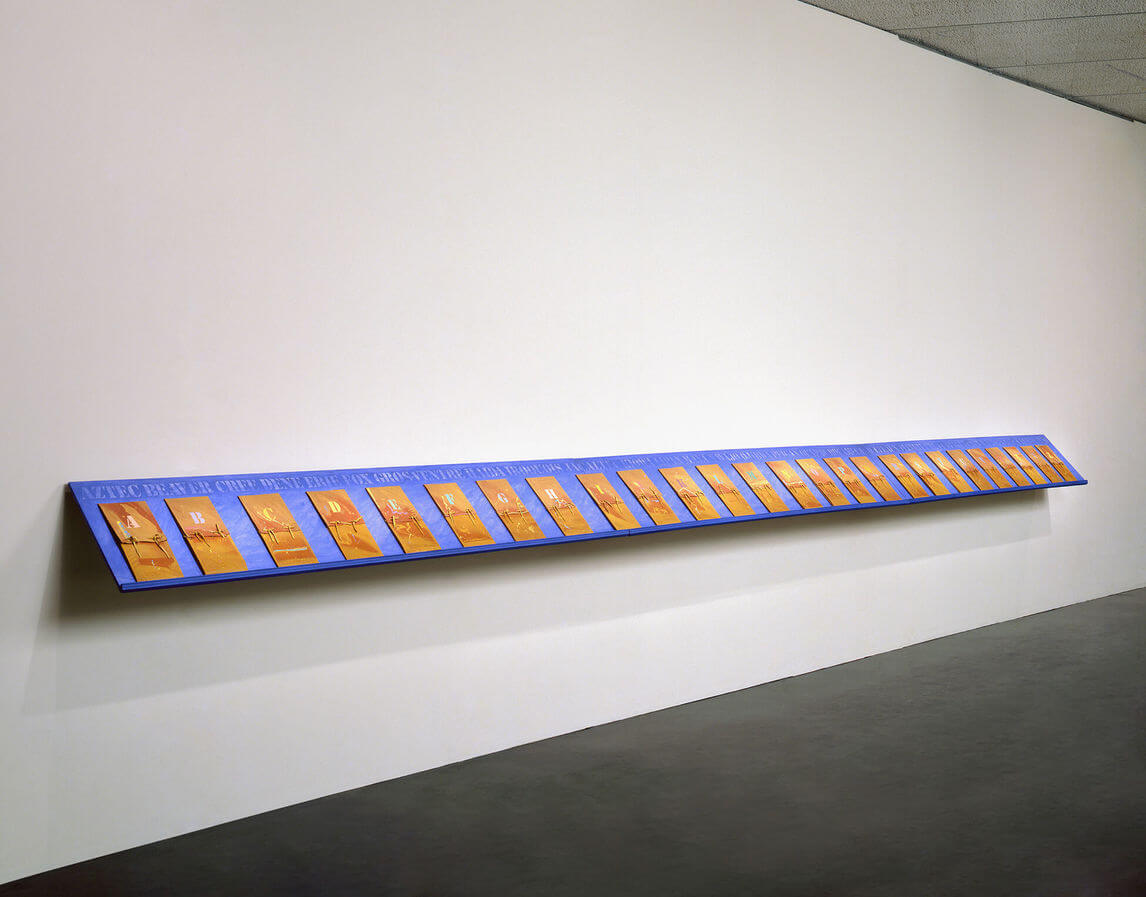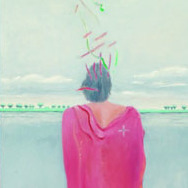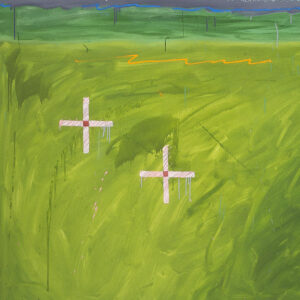Everything You Wanted to Know about Indians from A to Z 1985

Robert Houle, Everything You Wanted to Know about Indians from A to Z, 1985
Acrylic, rawhide, wood, and linen, installation of twenty-six objects, 45.3 x 735 cm
Winnipeg Art Gallery
Everything You Wanted to Know about Indians from A to Z represents Houle’s first exploration of sculptural installation. It is a multimedia work consisting of twenty-six linen and rawhide parfleches, each resting on a blue ledge fastened to a wall. The installation resembles a library shelf, or perhaps a church pew holding hymn books. Each parfleche is identified with a stencilled letter of the English alphabet on the upper flap and a corresponding Indigenous nation in the lower portion, beginning with the Aztec and ending with the Zuni (B corresponds with Beaver, C corresponds with Cree, and so on). The work is an extension, in three-dimensional form, of the paintings that compose Parfleches for the Last Supper, 1983.

By showing the alphabet as a piece of European technology and a microcosm of language, Houle employs metaphor. A viewer’s act of reading letters that represent the names of Indigenous nations speaks to the cultural appropriation of and misinformation about Indigenous cultures and history found in books. Houle questions whether total knowledge of a tribe or culture can be contained in such a format. Although this work may appear simple in form, it references several complex societies with many differing identities. By using the twenty-six letters of the alphabet, it also questions the scientific strategies for classification employed by ethnographers and in the display of objects for pedagogical purposes, critiquing how such objects have been presented as curiosities.
The work’s significance hearkens back to the artist’s tenure at the National Museum of Man in Hull (now the Canadian Museum of History), where he witnessed a conservation staff member, an ethnochemist, opening up a medicine bundle and examining its contents. Houle saw this act as an intrusion and a reflection of the museum’s perception of the medicine bundle as an artifact rather than as a living entity. Everything You Wanted to Know … explores the tensions between Indigenous traditions (such as sacredness of speech and the authority of naming) and contemporary artistic expression that uses language and European systems of classification.
Many North and South American Indigenous languages have fallen silent, a reminder of the relationship between colonial oppression and the transmission of language based on oral tradition. Indigenous knowledge is passed on through oral histories, storytelling, family narratives, and visual records. With the arrival of missionaries bringing bibles and settlers holding deeds to land parcels, control was eventually awarded to the literate colonizers.

 About the Author
About the Author
 More Online Art Books
More Online Art Books
 Acknowledgements
Acknowledgements